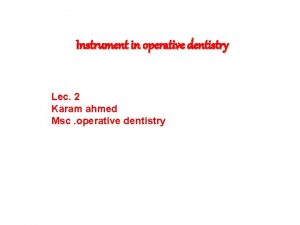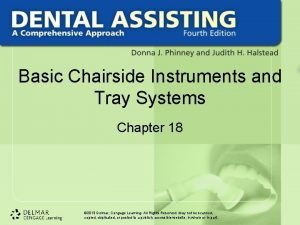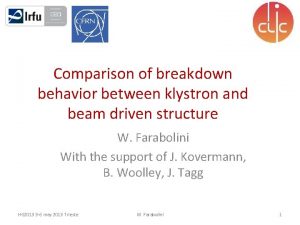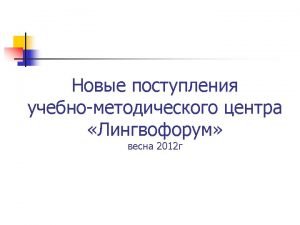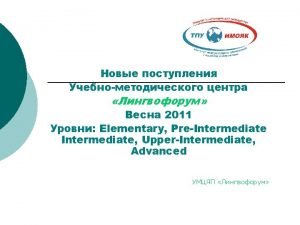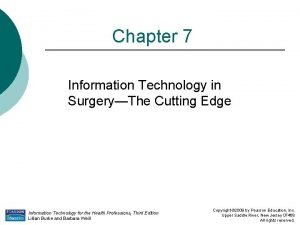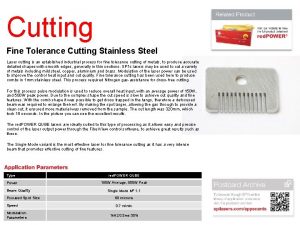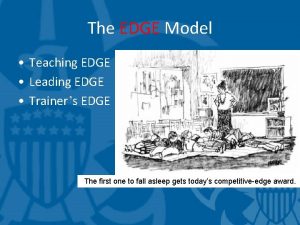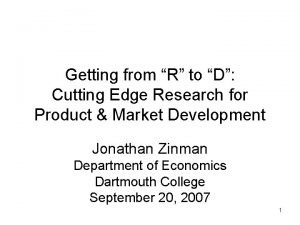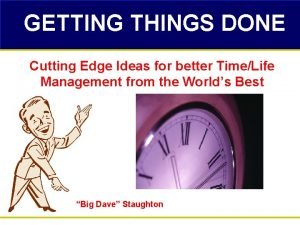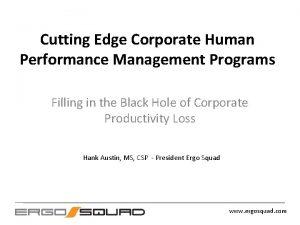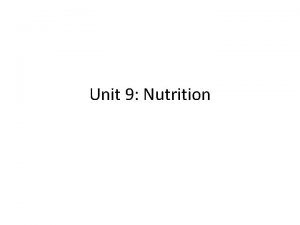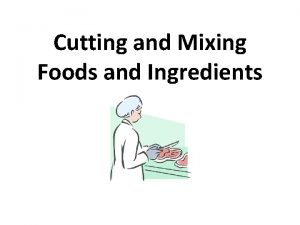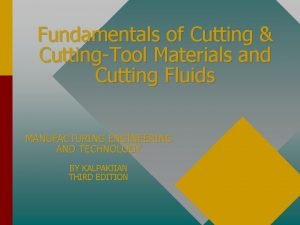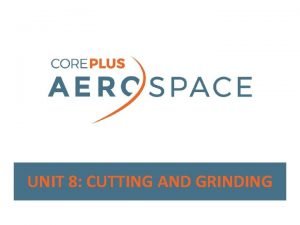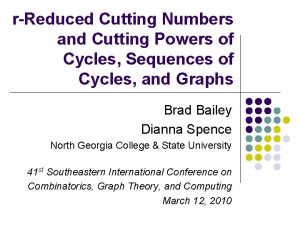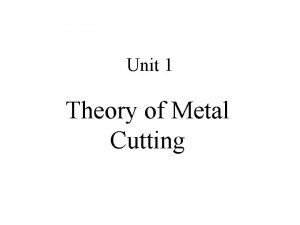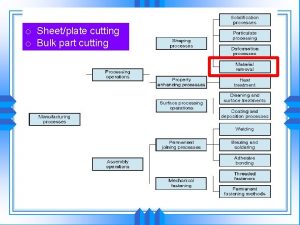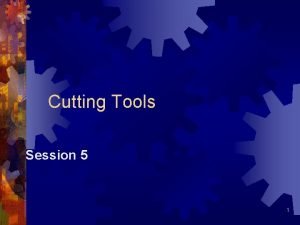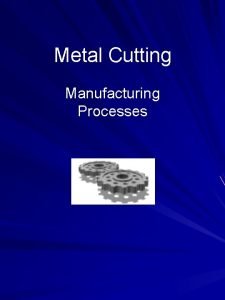PERFORMANCE AND NUTRITION Getting the cutting edge Overview










































- Slides: 42

PERFORMANCE AND NUTRITION Getting the cutting edge?

Overview Historical view on diet and performance Carbohydrates for the long run? Fats for the even longer run? Alkalosis for sprinting? Nitric Oxide for work economy? Drinking too much?

Historical overview The interest for diet and physical performance goes back to ancient times Already in the ancient Olympic games, nutrition was a theme of discussion, and Milo of Croton’s ability of eating was admired almost as much as his wrestling power At the end of 1800’s, physiologists in Scandinavia and else where, took interest in how the body used nutrients and the effect upon performance

1 2 3 Can you name them? 6 4 5

Fridtjof Nansen, Norway August Krogh, Denmark Archibald Vivian Hill, UK Bengt Saltin, Sweden/Denmark Jonas Bergström, Sweden Lars Hermansen, Norway

Carbohydrates for the long run?

Muscle biopsies The research developed from the biopsy technique of Bergström and Hultman gave new insight into the depletion of energy stores during exercise This led to the recommendations of: ○ Carbohydrate loading before exercise ○ Carbohydrate intake during exercise ○ Replenishment of glycogen stores after exercise

Carbohydrate loading The original model proposed by Bergström et al. 1 was rigorous: 1) an exhausting bout of exercise to deplete the glycogen stores 2) living and (if possibly) training for three days on a very low CHO diet 3) three days of resting and a very high CHO intake (600 g/day) 4) competition Bergström, J. , Hermansen, L. , Hultman, E. , Saltin, B. Diet, muscle glycogen and physical performance. Acta Physiologica Scandinavica 1967, 71. p. 140 -150 1

Carbohydrate loading The method proved difficult to perform for especially high performance athletes • An alternative method was developed (Blom et al. , 1987)1: • – 1)resting for two days with a moderate CHO intake (400 g/day) – 2) Competition • This method proved more easy to perform, and gave the same CHO loading as the original method in trained athletes 1 Blom, PCS Costill, DL Vøllestad, NK. Exhaustive running: inappropriate as a stimulus of muscle glycogen supercompensation. Med. Sci Sports & Exerc, 19, 398 -403, 1987

Blom, Costill, Vøllestad. Exhaustive running: inappropriate as a stimulus of muscle glycogen supercompensation. Med. Sci Sports & Exerc, 19, 398 -403, 1987

CHO intake Previously, athletes had been advised not to drink or eat during exercise for fear of GI problems Now the ACSM recommendations was to drink frequently and take in energy in the form of CHO beverage

ACSM guidelines • • 3. During exercise, athletes should start drinking early and at regular intervals in an attempt to consume fluids at a rate sufficient to replace all the water lost through sweating (i. e. , body weight loss), or consume the maximal amount that can be tolerated 6. During intense exercise lasting longer than 1 h, it is recommended that carbohydrates be ingested at a rate of 30 -60 g · h-1 to maintain oxidation of carbohydrates and delay fatigue. This rate of carbohydrate intake can be achieved without compromising fluid delivery by drinking 600 -1200 ml· h-1 of solutions containing 4%-8% carbohydrates (g · 100 ml-1). The carbohydrates can be sugars (glucose or sucrose) or starch (e. g. , maltodextrin) Convertino, Victor A. (Chair); Armstrong, Lawrence E. , Coyle, Edward F. , Mack, Gary W. , Sawka, Michael N. , Senay, Leo C. Jr. , Sherman, W. Michael. ACSM Position Stand: Exercise and Fluid Replacement. Medicine & Science in Sports & Exercise: October 1996 - Volume 28 - Issue 10 pp i-ix

Getting enough energy? During hard work, the energy requirements may exceed what is possible to supply Can the amount of energy be increased? (Jeukendrup, Gleeson, 2010, page 138)

Combined ingestion of glucose and fructose Roy L. P. G. Jentjens, Luke Moseley, Rosemary H. Waring, Leslie K. Harding, Asker E. Jeukendrup. Oxidation of combined ingestion of glucose and fructose during exercise. J Appl Physiol 96: 1277– 1284, 2004.

Combined ingestion of glucose and fructose Asker E. Jeukendrup Carbohydrate feeding during exercise. European Journal of Sport Science, March 2008; 8(2): 77 -86

Mouth rinse? Performance enhancement has been seen on exercises that have durations too short to produce severe glycogen depletion, and without intake of carbohydrates, only rinsing the mouth with a sugar solution 1 This finding has been challenged by others 2 1 James M. Carter, Asker E. Jeukendrup, and David A. Jones. The Effect of Carbohydrate Mouth Rinse on 1 -h Cycle Time Trial Performance Med. Sci. Sports Exerc. , Vol. 36, No. 12, pp. 2107– 2111, 2004. 2 Milou Beelen, Jort Berghuis, Ben Bonaparte, Sam B. Ballak, Asker E. Jeukendrup, and Luc J. C. van Loon. Carbohydrate Mouth Rinsing in the Fed State: Lack of Enhancement of Time-Trial Performance. International Journal of Sport Nutrition and Exercise Metabolism, 2009, 19, 400409

James M. Carter, Asker E. Jeukendrup, and David A. Jones. The Effect of Carbohydrate Mouth Rinse on 1 -h Cycle Time Trial Performance Med. Sci. Sports Exerc. , Vol. 36, No. 12, pp. 2107– 2111, 2004. Milou Beelen, Jort Berghuis, Ben Bonaparte, Sam B. Ballak, Asker E. Jeukendrup, and Luc J. C. van Loon Carbohydrate Mouth Rinsing in the Fed State: Lack of Enhancement of Time-Trial Performance International Journal of Sport Nutrition and Exercise Metabolism, 2009, 19, 400 -409

CHO repletion The biopsy data also indicated that a rapid replenishment of glycogen stores would be beneficial for the restitution and the near future training and competition activity The advice is to eat about 1. 2 g of CHO pr kg body mass during the first two hours and then continue to eat CHO for the next hours 1 1 Roy Jentjens and Asker E. Jeukendrup. Determinants of Post-Exercise Glycogen Synthesis During Short-Term Recovery. Sports Med 2003; 33 (2): 117 -144

How much glucose should be ingested after exercise? Blom, PCS, Høstmark, A. T, Vaage, O. , Kardel, K. R, Mæhlum, S. Effect of different post exercise sugar diets on the rate of muscle glycogen synthesis. Med Sci Sport Exerc, 1987, 19, (5) 491 -497

Testing out Gatorade for the first time Roy Jentjens and Asker E. Jeukendrup. Determinants of Post-Exercise Glycogen Synthesis During Short-Term Recovery. Sports Med 2003; 33 (2): 117 -144

Training in a glycogen depleted state? Anne K. Hansen, Christian P. Fischer, Peter Plomgaard, Jesper Løvind Andersen, Bengt Saltin and Bente Klarlund Pedersen. Skeletal muscle adaptation: training twice every second day vs. training once daily. J Appl Physiol 98: 93– 99, 2005.

Carbohydrate conclusion “Carbohydrate ingestion can improve endurance capacity and performance. The optimal dose of carbohydrate is still subject to debate, but recent evidence suggests that there may be a dose-response effect as long as the carbohydrate ingested is also oxidized and does not result in gastrointestinal distress. Oxidation rates of a single type of carbohydrate do not exceed 60 g h-1. However, when multiple transportable carbohydrates are ingested (i. e. glucose and fructose), oxidation rates can be increased significantly. To achieve these high oxidation rates, carbohydrate needs to be ingested at high rates and this has usually been associated with poor fluid delivery. There are suggestions, however, that using multiple transportable carbohydrates may enhance fluid delivery compared with a single carbohydrate. ” Asker E. Jeukendrup. Carbohydrate feeding during exercise. European Journal of Sport Science, March 2008; 8(2): 77 -86

Fat for the even longer run?

Dietary fat intake With limited CHO stores, the idea of using fat is tempting The problem is that fat oxidation requires more oxygen, so, at high intensity, CHO must be used An approach is to try and spare CHO in the beginning, saving CHO for the final sprint

Fat loading Eating a high fat diet for a few days do reduce endurance performance 1 Eating a high fat diet for a few days do not affect endurance performance 2 Eating a fat rich diet for more than a week makes changes in the resting metabolism 3 Attempts to use shorter fatty acid chains (MCT)have mostly not enhanced performance 4 Bergström, J. , Hermansen, L. , Hultman, E. , Saltin, B. Diet, muscle glycogen and physical performance. Acta Physiologica Scandinavica 1967: Vol. 71. p. 140 -150 2 Michael Vogt, Adrian Puntschart, Hans Howald, Bruno Mueller, Christoph Mannhart, Liliane Gfeller-tuescher, Primus Mullis, and Hans Hoppeler. Effects of Dietary Fat on Muscle Substrates, Metabolism, and Performance in Athletes. Med. Sci. Sports Exerc. , Vol. 35, No. 6, pp. 952– 960, 2003. 3 Helge, J. W. , Wulff, B. , Kiens, B. Impact of a fat-rich diet on endurance in man: role of the dietary period. Medicine & Science in Sports & Exercise Mar 1998: Vol. 30 Issue 3. p. 456 -461 4 John A. Hawley, Fred Brouns and Asker Jeukendrup Strategies to Enhance Fat Utilisation During Exercise. Sports Med 1998 Apr; 25 (4): 241 -257 1

Fat loading Michael Vogt, Adrian Puntschart, Hans Howald, Bruno Mueller, Christoph Mannhart, Liliane Gfeller-tuescher, Primus Mullis, and Hans Hoppeler. Effects of Dietary Fat on Muscle Substrates, Metabolism, and Performance in Athletes. Med. Sci. Sports Exerc. , Vol. 35, No. 6, pp. 952– 960, 2003. IMCL=Intramyocellular lipids

Fat loading Michael Vogt, Adrian Puntschart, Hans Howald, Bruno Mueller, Christoph Mannhart, Liliane Gfeller-tuescher, Primus Mullis, and Hans Hoppeler. Effects of Dietary Fat on Muscle Substrates, Metabolism, and Performance in Athletes. Med. Sci. Sports Exerc. , Vol. 35, No. 6, pp. 952– 960, 2003.

Using MCT as CHO sparer Mamen, A, Medbø, J. I, Gordeladze, J. O. Effect of fat and L-carnitin ingestion on bicycling performance. Acta Kinesiologica Universitatis Tartuensis, 2003, 8, 89 -105

Fat conclusion “In some individuals the ingestion of caffeine improves endurance capacity, but Lcarnitine supplementation has no effect on either rates of FA oxidation, muscle glycogen utilisation or performance. Likewise, the ingestion of small amounts of medium-chain triglyceride (MCT) has no major effect on either fat metabolism or exercise performance. On the other hand, in endurance-trained individuals, substrate utilisation during submaximal [60% of peak oxygen uptake (VO 2 peak)] exercise can be altered substantially by the ingestion of a high fat (60 to 70% of energy intake), low CHO (15 to 20% of energy intake) diet for 7 to 10 days. Adaptation to such a diet, however, does not appear to alter the rate of working muscle glycogen utilisation during prolonged, moderate intensity exercise, nor consistently improve performance. At present, there is insufficient scientific evidence to recommend that athletes either ingest fat, in the form of MCTs, during exercise, or ‘fat-adapt’ in the weeks prior to a major endurance event to improve athletic performance. ” John A. Hawley, Fred Brouns and Asker Jeukendrup Strategies to Enhance Fat Utilisation During Exercise. Sports Med, 1998 Apr; 25 (4): 241 -257

Alkalosis for sprinting?

Acidosis Diet with a high acid content can reduce work performance in shorthigh intensity work “Exercise time to exhaustion was longer after the normal (p <0. 05) and high (p <0. 01) CHO diets compared with the low CHO diet. Pre-exercise plasma bicarbonate concentration and blood PCO 2 were higher after the high CHO diet when compared with the normal (p = 0. 05, p <0. 05 respectively) and low CHO conditions (p <0. 05, p <0. 05 respectively). Pre-exercise bicarbonate was also higher after the normal CHO diet when compared with the low CHO diet (p <0. 05). ” 1 “Exercise time to exhaustion after the High Fat High Protein diet (179 +/- 63 s) was shorter when compared with the Normal (210 +/- 65 s; p <0. 01) and High CHO Low Fat (219 +/- 69 s; p <0. 05) diets. ” 2 1 Greenhaff PL; Gleeson M; Whiting PH; Maughan RJ. Dietary composition and acid-base status: limiting factors in the performance of maximal exercise in man? Eur J Appl Physiol Occup Physiol, 1987; Vol. 56 (4), pp. 444 -50 2 Greenhaff PL; Gleeson M; Maughan RJ. Diet-induced metabolic acidosis and the performance of high intensity exercise in man. Eur J Appl Physiol Occup Physiol, 1988; Vol. 57 (5), pp. 583 -90

Greenhaff, Gleeson, Maughan. Diet-induced metabolic acidosis and the performance of high intensity exercise in man. Eur J Appl Physiol Occup Physiol , 1988, 57 (5), 583 -590

Induced alkalosis It’s possible to induce alkalotic conditions in the blood by ingesting sodium hydrogen carbonate or sodium citrate In some cases, this has improved the performance 1 It’s also possible to enhance buffer capacity by eating low sodium diets The effect on performance is barely studied 1 Wilkes, D. , Gledhill, N. , Smyth, R. Effect of acute induced metabolic alkalosis on 800 -m racing time. Medicine & Science in Sports & Exercise 1983: Vol. 15 Issue 4. p. 277 -280

Wilkes, D. , Gledhill, N. , Smyth, R. Effect of acute induced metabolic alkalosis on 800 -m racing time. Medicine & Science in Sports & Exercise 1983: Vol. 15 Issue 4. p. 277 -280

m = muscle buffer capacity

Nitric Oxide for work economy?

”During moderate exercise, nitrate supplementation reduced muscle fractional O 2 extraction (as estimated using nearinfrared spectroscopy). The gain of the increase in pulmonary O 2 uptake following the onset of moderate exercise was reduced by 19% in the BR condition (BR: 8. 6± 0. 7 vs. PL: 10. 8± 1. 6 ml·min-1·W-1; P<0. 05). During severe exercise, the O 2 uptake slow component was reduced (BR: 0. 57± 0. 20 vs. PL: 0. 74± 0. 24 L·min-1; P<0. 05), and the time-to-exhaustion was extended (BR: 675± 203 vs. PL: 583± 145 s; P<0. 05). ” Stephen J. Bailey, Paul Winyard, Anni Vanhatalo, Jamie R. Blackwell, Fred J. Di. Menna, Daryl P. Wilkerson, Joanna Tarr, Nigel Benjamin, and Andrew M. Jones. Dietary nitrate supplementation reduces the O 2 cost of low-intensity exercise and enhances tolerance to high-intensity exercise in humans. J Appl Physiol 107: 1144– 1155, 2009. BR=beetroot juice, PL=placebo

“In contrast to submaximal work we found no significant effects of nitrate supple -mentation on the metabolic variables during maximal work. This may be explained by changes in physiological functions at a maximum level of effort compared with a submaximal level. During maximal or near maximal work, the modulatory physio-logical effects by nitrate are likely to be overridden by emergency reactions. ”

Drinking too much?

Drinking too much? • • The ACSM guidelines for fluid re-placement has received some critique lately Professor Timothy David Noakes of Cape Town, SA has raised concerns about the necessity of drinking that much 1 He has pointed out that hyponatremia is a more frequent disturbance than dehydration in marathon races 2 Experience from elite athletes also indicate that the need to replenish all the sweat during exercise is not required 1 T D Noakes. Drinking guidelines for exercise: What evidence is there that athletes should drink ‘‘as much as tolerable’’, ‘‘to replace the weight lost during exercise’’ or ‘‘ad libitum’’? Journal of Sports Sciences, May 2007; 25(7): 781– 796 2 F G Beltrami, T Hew-Butler, T D Noakes. Drinking policies and exercise-associated hyponatraemia: is anyone still promoting overdrinking? Br J Sports Med 2008; 42: 796– 801

References Bailey, S. J. , Winyard, P. , Vanhatalo, A. , Blackwell, J. R. , Di. Menna, F. J. , Wilkerson, D. P. , et al. (2009). Dietary nitrate supplementation reduces the O 2 cost of low-intensity exercise and enhances tolerance to high-intensity exercise in humans. Journal of Applied Physiology , 107 , 1144– 1155. Beelen, M. , Berghuis, J. , Bonaparte, B. , Ballak, S. B. , Jeukendrup, A. E. , & van Loon, L. J. (2009). Carbohydrate Mouth Rinsing in the Fed State: Lack of Enhancement of Time-Trial Performance. International Journal of Sport Nutrition and Exercise Metabolism , 19, 400 -409. Beltrami, F. G. , Hew-Butler, T. , & Noakes, T. D. (2008). Drinking policies and exercise-associated hyponatraemia: is anyone still promoting overdrinking? British Journal of Sports Medicine , 42, 796– 801. Bergström, J. , Hermansen, L. , Hultman, E. , & Saltin, B. (1967). Diet, muscle glycogen and physical performance. Acta Physiologica Scandinavia , 71, 140 -150. Blom, P. C. , Costill, D. L. , & Vøllestad, N. K. (1987). Exhaustive running: inappropriate as a stimulus of muscle glycogen supercompensation. Medicine & Science in Sport & Exercise, 19, 398 -403. Blom, P. C. , Høstmark, A. T. , Vaage, O. , Kardel, K. R. , & Mæhlum, S. (1987). Effects of different post exercise sugar diets on the rate of muscle glycogen synthesis. Medicine and Science in Sport and Exercise , 19 (5), 491 -497. Carter, J. M. , Jeukendrup, A. E. , & Jones, D. A. (2004). The Effect of Carbohydrate Mouth Rinse on 1 -h Cycle Time Trial Performance. Medicine & Science in Sports & Exercise , 36, (12), 2107– 2111. Edge, J. , Bishop, D. , & Goodman, C. (u. d. ). Effects of chronic Na. HCO 3 ingestion during interval training on changes to muscle buffer capacity, metabolism, and short-term endurance performance. Journal of Applied Physiology , 101, 918 -925. Greenhaff, P. L. , Gleeson, M. , & Maughan, R. J. (1988). Diet-induced metabolic acidosis and the performance of high intensity exercise in man. European Journal of Applied Physiology and Occupational Physiology , 57 (5), 583 -590. Greenhaff, P. L. , Gleeson, M. , Whiting, P. H. , & Maughan, R. J. (1987). Dietary composition and acid-base status: limiting factors in the performance of maximal exercise in man? European Journal of Applied Physiology and Occupional Physiology , 56 (4), 444450.

References Hansen, A. K. , Fischer, C. P. , Plomgaard, P. , Andersen, J. L. , Saltin, B. , & Pedersen, B. K. (2005). Skeletal muscle adaptation: training twice every second day vs. training once daily. Journal of Applied Physiology, 98, 93 -99. Hawley, J. A. , Brouns, F. , & Jeukendrup, A. E. (1998 ). Strategies to Enhance Fat Utilisation During Exercise. Sports Medicine , 25 (4 ), 241 -257. Helge, J. W. , Wulff, B. , & Kiens, B. (1998). Impact of a fat-rich diet on endurance in man: role of the dietary period. Medicine & Science in Sport & Exercise , 30 (3), 456 -461. Jentjens, R. L. , Mosles, L. , Waring, R. H. , Harding, L. K. , & Jeukendrup, A. E. (2004). Oxidation of combined ingestion of glucose and fructose during exercise. Journal of Applied Physiology , 96, 1277 -1284. Jentjens, R. , & Jeukendrup, A. E. (2003). Determinants of Post-Exercise Glycogen Synthesis During Short-Term Recovery. Sports Medicine , 33 (2), 117 -144. Jeukendrup, A. E. (2008). Carbohydrate feeding during exercise. European Journal of Sport Science , 8 (2), 77 -86. Jeukendrup, A. E. , & Gleeson, M. (2010). Sport Nutrition. Champaign: Human Kinetics. Larsen, F. J. , Weitzberg, E. , Lundberg, J. O. , & Ekblom, B. (2007 ). Effects of dietary nitrate on oxygencost during exercise. Acta Physiologica , 191, 59 -66. Mamen, A. , Medbø, J. I. , & Gordeladze, J. O. (2003). Effect of fat and L-carnitin ingestion on bicycling performance. Acta Kinesiologica Universitatis Tartuensis , 8, 89 -105. Noakes, T. D. (2007). Drinking guidelines for exercise: What evidence is there that athletes should drink ‘‘as much as tolerable’’, ‘‘to replace the weight lost during exercise’’ or ‘‘ad libitum’’? Journal of Sports Sciences , 25 (7), 781– 796. Vogt, M. , Puntschart, A. , Howald, H. , Mueller, B. , Mannhart, C. , Gfeller-Tuescher, L. , et al. (2003). Effects of Dietary Fat on Muscle Substrates, Metabolism, and Performance in Athletes. 35 (6), 952 -960. Wilkes, D. , Gledhill, N. , & Smyth, R. (1983: ). Effect of acute induced metabolic alkalosis on 800 -m racing time. Medicine & Science in Sports & Exercise , 15 (4), 277 -280.
 The secret of getting ahead is getting started
The secret of getting ahead is getting started Cutting instrument formula
Cutting instrument formula Hand cutting instruments in operative dentistry
Hand cutting instruments in operative dentistry Non cutting dental instruments
Non cutting dental instruments Rising edge and falling edge
Rising edge and falling edge Sewing tools measuring tools
Sewing tools measuring tools Flank wear
Flank wear The cutting edge 2
The cutting edge 2 Cutting edge packaging
Cutting edge packaging Cutting edge graphics
Cutting edge graphics Contoh teori cutting edge
Contoh teori cutting edge Cutting edge peter moor
Cutting edge peter moor Cutting edge technology
Cutting edge technology Cutting edge technology
Cutting edge technology Moldflow
Moldflow Cutting edge
Cutting edge Cutting edge
Cutting edge Cutting workshop
Cutting workshop Cutting edge bolus
Cutting edge bolus High performance nutrition
High performance nutrition Hình ảnh bộ gõ cơ thể búng tay
Hình ảnh bộ gõ cơ thể búng tay Ng-html
Ng-html Bổ thể
Bổ thể Tỉ lệ cơ thể trẻ em
Tỉ lệ cơ thể trẻ em Chó sói
Chó sói Tư thế worm breton
Tư thế worm breton Chúa yêu trần thế alleluia
Chúa yêu trần thế alleluia Các môn thể thao bắt đầu bằng tiếng đua
Các môn thể thao bắt đầu bằng tiếng đua Thế nào là hệ số cao nhất
Thế nào là hệ số cao nhất Các châu lục và đại dương trên thế giới
Các châu lục và đại dương trên thế giới Công thức tính thế năng
Công thức tính thế năng Trời xanh đây là của chúng ta thể thơ
Trời xanh đây là của chúng ta thể thơ Mật thư tọa độ 5x5
Mật thư tọa độ 5x5 101012 bằng
101012 bằng độ dài liên kết
độ dài liên kết Các châu lục và đại dương trên thế giới
Các châu lục và đại dương trên thế giới Thơ thất ngôn tứ tuyệt đường luật
Thơ thất ngôn tứ tuyệt đường luật Quá trình desamine hóa có thể tạo ra
Quá trình desamine hóa có thể tạo ra Một số thể thơ truyền thống
Một số thể thơ truyền thống Cái miệng nó xinh thế chỉ nói điều hay thôi
Cái miệng nó xinh thế chỉ nói điều hay thôi Vẽ hình chiếu vuông góc của vật thể sau
Vẽ hình chiếu vuông góc của vật thể sau Biện pháp chống mỏi cơ
Biện pháp chống mỏi cơ đặc điểm cơ thể của người tối cổ
đặc điểm cơ thể của người tối cổ


